I had my mind made up…was determined to make fat rice noodles (besides, a trip to the Asian grocery store for premade noodles, in HELLISH D.C. traffic, was less than appealing). Plus, I’m always up for a challenge.
I don’t want to steer you away from trying this at home, but I will admit, it took me several attempts to get these noodles to work, and I can’t vouch for the authenticity of my process. Nonetheless, the resulting noodles were fantastic. Hopefully my trial and error will save you some headache in the long run (if you too have lost your mind [just kidding] and want to give these noodles a go, I highly encourage it).
So here’s how it all went down…
My first attempt was a complete failure, just a gooey mess. That batch went straight into the garbage, not remotely salvageable. Second time, no luck either. What was I doing wrong? I don’t give up easily, just needed to rethink my plan of action.
The potential problem I concluded…the first two times I used a combination of rice and tapioca flour and cornstarch as several recipes suggested. This may work for others, but not for me. After a little online research, I learned that many people had better luck using solely white rice (in lieu of flour).
You soak the rice in equal parts water for 24 to 48 hours in the fridge. And then using a high speed blender, form a smooth paste that looks like this…
After more trial and error, figuring out how much batter to use, how thick to make the noodles, and how long to steam them, I was definitely on the right track. By my fourth attempt (was clearly on a mission), I was a well-oiled machine. I was churning them out, noodle after noodle, and feeling pretty pleased with myself. It’s the little things in life…
Texture-wise, I absolutely love these noodles. They have that perfect al dente, chewy texture you want in a noodle. So, happy to report, my persistence was definitely worth the effort.
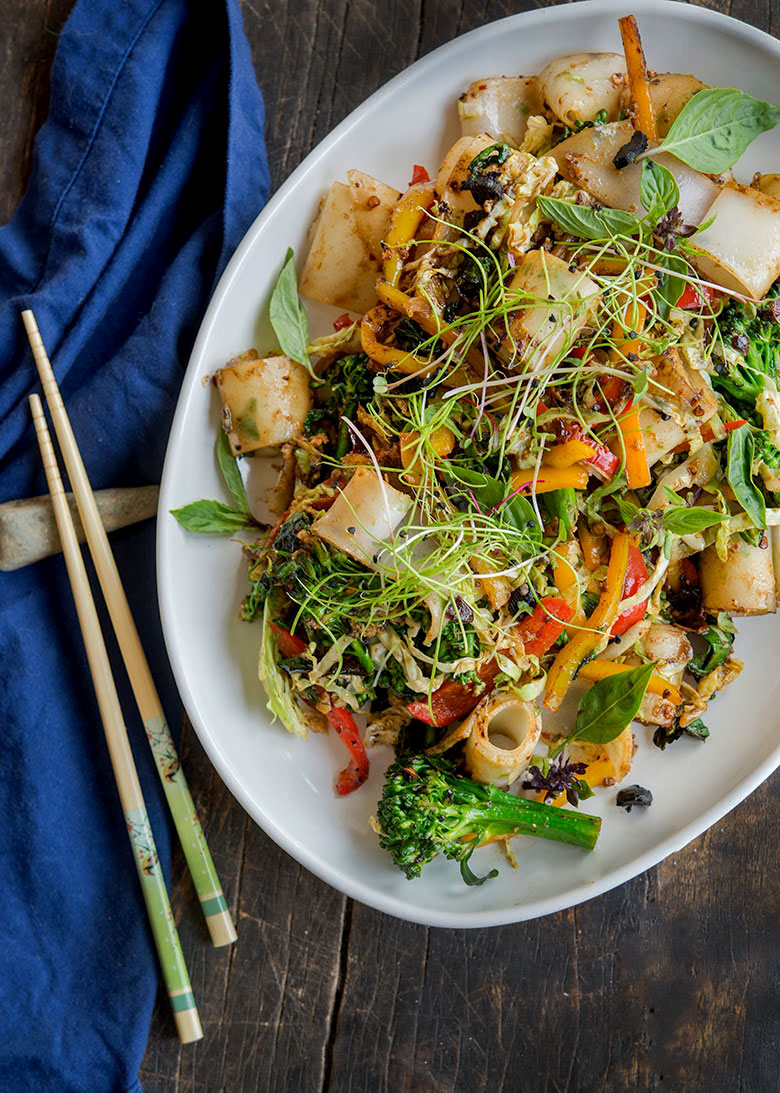
If you are as nuts enthusiastic as me and want to give this a try, you’ll need: white rice, a bamboo steamer basket, and a large deep pan, wok, or pot to set the basket over. I used a regular ole’ (8.5″) plate, lightly oiled, for steaming the noodles. That’s it. More detailed instructions below.
By the way, it’s perfectly acceptable to use premade rice noodles.
Here are a few photos of the process…
For the red chile sauce…
This is black garlic…another new discovery.
Have you tried black garlic? Its taste is most unusual — sweet, molasses, caramel, umami-goodness. Black garlic is decidedly more mellow — without that sharp, garlicky bite — than raw garlic.
I’m a bit of a science geek (like my father), always wanting to know the chemical process behind things. If you’re interested, here’s a little info. on the process behind black garlic…
Black garlic is garlic that has been aged for 4 to 6 weeks under low heat (140 degrees F). The black color the garlic takes on during this process comes from melanoidins, due to the chemical reaction (known as the Maillard reaction) that occurs between naturally occurring sugars and amino acids in the garlic as they break down.
I added a few (read: 4 to 5 thinly sliced cloves) to the stir-fry.
You can find black garlic here.
Also added some Chinese broccoli florets (also known as Gailan), but you could substitute regular broccoli or any other type of flowering rabe.
That’s the great thing about a stir-fry, you can add just about any vegetable you like or have on hand.
Some thinly sliced cabbage also went into the stir-fry, along with a few other vegetables…
Isn’t this the coolest looking cabbage? Thinking about making some baked cabbage chips with the thick outer leaves.
Dig in and enjoy!
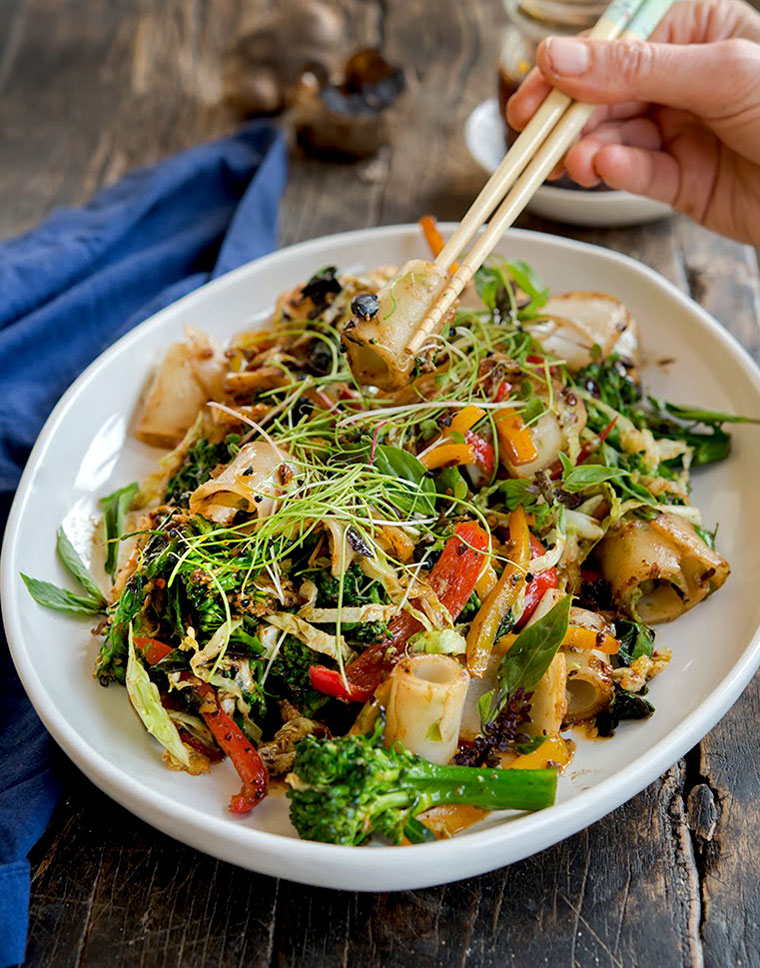
Flat Rice Noodles with Chinese Broccoli and Black Garlic
Since a stir-fry is pretty flexible, I’m keeping the quantity of ingredients rather general. Add as little or as much as you like.
[Olive] oil
Bell peppers, seeded and thinly sliced
Chinese broccoli, cut into small florets
White cabbage, thinly sliced
Black garlic cloves, thinly sliced (optional)
Egg(s)
Rice noodles (recipe to follow) or premade wide rice noodles
Red chile sauce (recipe to follow)
[Thai] basil leaves for garnish
Sichuan red chile oil for serving (recently wrote about this highly addictive oil here)
Heat 1 tablespoon oil in a wok or large skillet. When hot, add the bell peppers and saute until tender. Remove and set aside.
Add a little more oil to the wok. Add the broccoli florets and saute a few minutes until just tender. Add the cabbage and saute another minute. Add the black garlic and saute another 30 seconds. With a spatula, move the vegetables to one side, and crack the egg(s) into the skillet and scramble. Stir to combine. Add the rice noodles and desired amount of chile sauce, and toss gently to combine. Cook until the noodles are just warmed through. Top with a few bail leaves. Serve with a side of red chile oil.
Fat Rice Noodles
*Equal amounts of white rice and water (see note below)
Finely chopped scallions (optional)
Soak the rice in water in the refrigerator for 24 to 48 hours. Pour the rice and the liquid in a high speed blender, and blend until it forms a smooth paste. Transfer to a bowl. Mix in the chopped scallions (optional).
Prepare an ice water bath (in a bowl large enough to accommodate an 8.5″ plate).
Make sure your steamer basket fits snugly over your pan or wok. Fill pan/wok with a couple inches of water. Bring the water to a gentle simmer. Place the steamer basket on top of the pan.
Lightly oil an 8.5″ plate. Ladle about 1/2 cup of the rice mixture onto the plate. Swirl to form a thin, even layer.
Place the plate in the steamer basket, cover, and steam for about 3 minutes until the paste is set (it will be dry and smooth). If still sticky, place the plate back in the steamer for another 30 seconds. Using oven mitts, remove the plate from the steamer and place it over the ice bath (making sure that water does not seep onto the plate); cooling the noodle makes it easier to release from the plate.
After it has cooled for a few minutes, run a dull (butter) knife or off set spatula around the edge of the noodle. Lift up an edge of the noodle and peel the noodle off the plate (at this point it should peel right off).
Roll into a log, and with a sharp knife slice into individual noodles, about 3/4″ thick.
Repeat with the remaining batter. Make sure to check the water level in your steamer and replenish as needed.
*Note: used 2 cups of white rice and 2 cups of water, which yielded about 3 1/2 to 4 dozen 3/4″ noodles with an 8.5″ plate.
Red Chile Sauce
2 tablespoons soy sauce/tamari
1 teaspoon honey
4 to 6 tablespoons Sichuan red chile oil plus flakes
1 teaspoon sesame oil
Add all ingredients to a bowl. Whisk to combine.
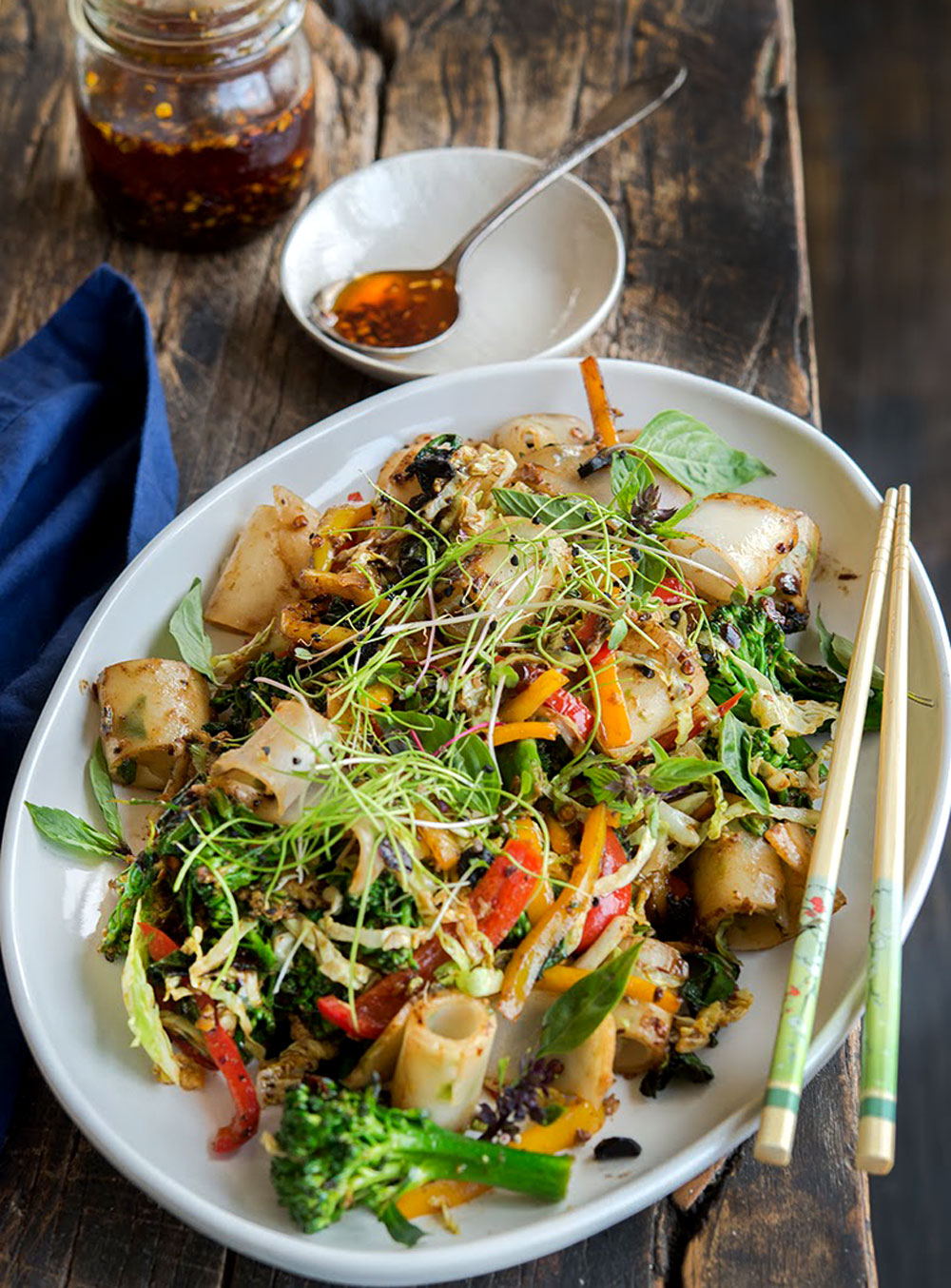












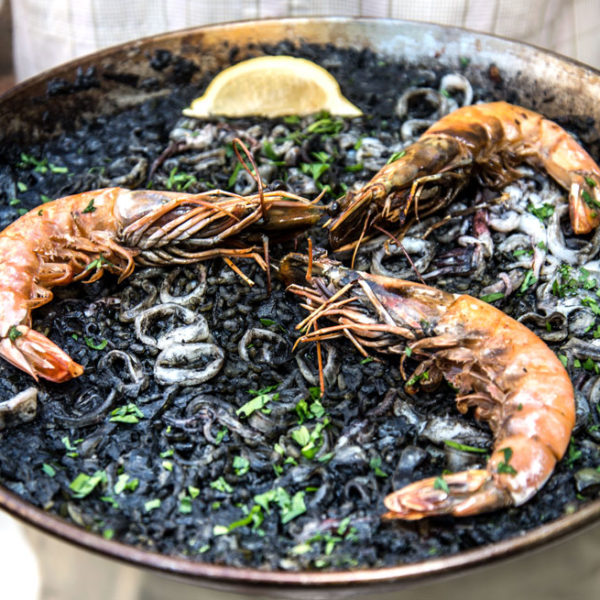
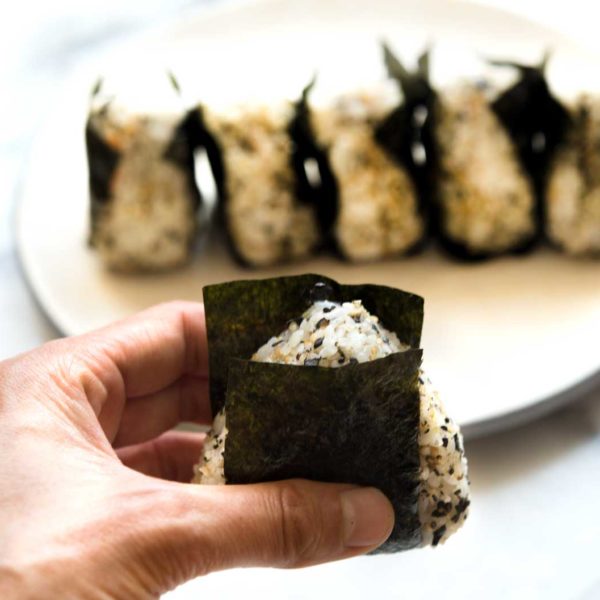
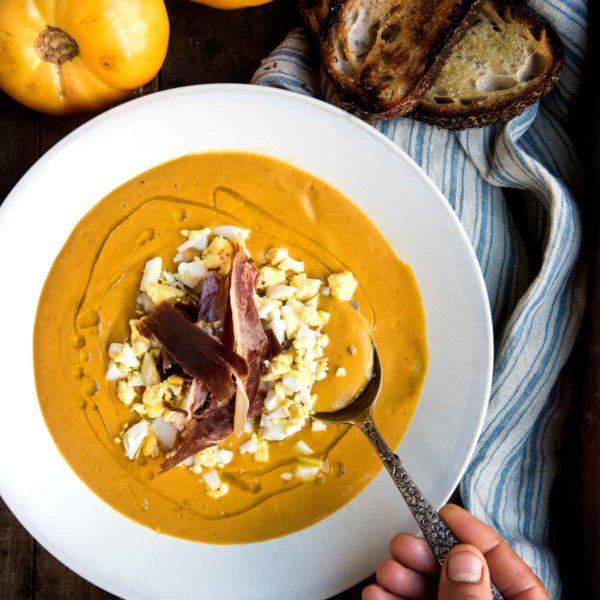


4 comments
Eva @ 1 Big Bite
I love Asian food but my cooking skills in this area are rather basic. You blew my mind, your persistence paid off. 🙂
Eva @ 1 Big Bite
I love Asian food but my cooking skills in this area are rather basic. You blew my mind, your persistence paid off. 🙂
anna @ annamayeveryday
Wow, that looks like a delicious plate of food. Sounds a bit fiddly but gosh worth it, bet it was amazing!
anna @ annamayeveryday
Wow, that looks like a delicious plate of food. Sounds a bit fiddly but gosh worth it, bet it was amazing!